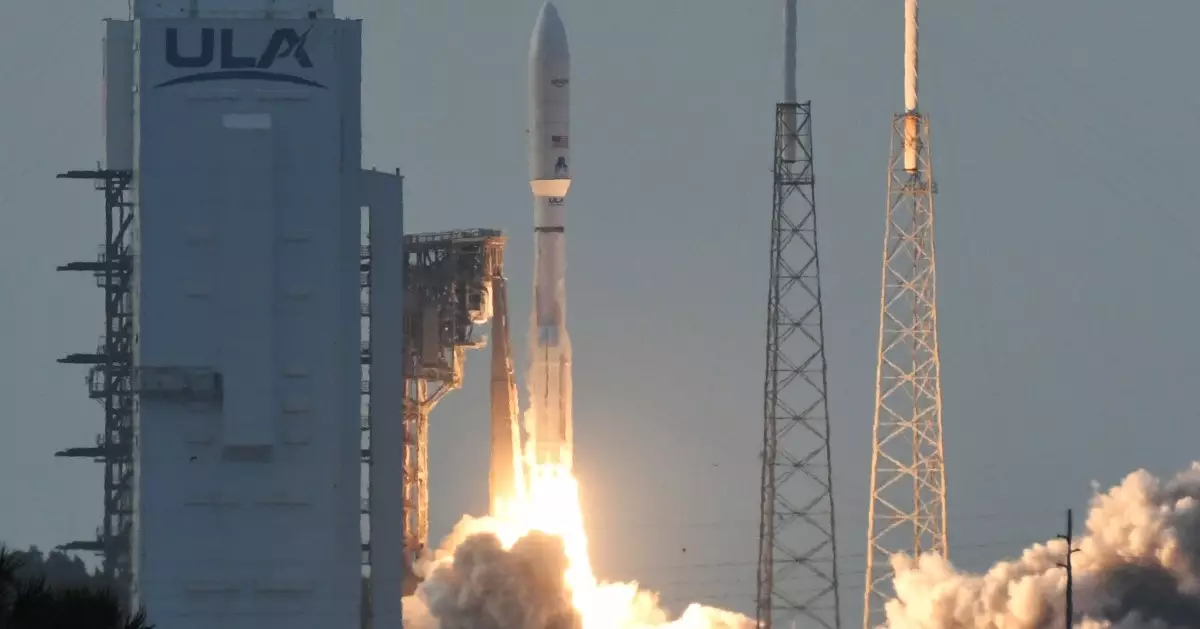Amazon’s entry into the satellite internet space with the launch of Project Kuiper could potentially reshape the landscape of global communication. The recent deployment of the first 27 satellites marks a significant step for the tech giant, which aims to establish itself as a formidable competitor against SpaceX’s Starlink, already dominating the market. With over 3,000 satellites planned to create a robust broadband internet network, Amazon is poised to challenge the status quo in areas underserved by traditional internet providers.
Unveiled back in 2019, Project Kuiper’s $10 billion investment reflects not only Amazon’s commitment to technological advancement but also its understanding of the essential role that connectivity plays in today’s digital economy. With a federal mandate requiring the deployment of at least 1,618 satellites by mid-2026, Amazon is under pressure to accelerate its launch schedule while demonstrating the reliability and quality of its service.
The Launch: A Milestone in Technical Achievement
On April 28, 2023, Amazon successfully launched its first batch of satellites aboard a United Launch Alliance (ULA) Atlas V rocket from Cape Canaveral Space Force Station. While previous efforts had been thwarted by adverse weather conditions, this launch exemplified the intricate planning and advanced engineering that made it possible. For Amazon’s CEO, Andy Jassy, it was not just about the satellites; it was a celebration of teamwork and innovation, a critical component in an endeavor as complex as satellite deployment.
The operational altitude of 280 miles (450 kilometers) puts these satellites in low Earth orbit, a strategic position enabling lower latency and faster internet speeds. Each satellite plays a vital role in creating a constellation capable of providing high-speed service across diverse geographical locations. The successful activation and communications with ground systems signal not merely the operational readiness of the satellites but also the beginning of a transformative service offering for consumers and businesses alike.
The Competitive Landscape: Kuiper vs. Starlink
As Project Kuiper gets underway, it faces a daunting rival in SpaceX’s Starlink, which has already launched more than 7,200 satellites and has garnered a massive customer base worldwide. SpaceX’s aggressive expansion, including its recent completion of the 50th Starlink mission of 2025, reflects an unparalleled pace in the satellite communications sector. With approval for future launches potentially increasing its fleet to 34,400 satellites, Starlink has already set a high bar for service delivery.
In comparison, Amazon’s initial challenges include not only meeting the FCC’s deployment deadlines but also distinguishing its service offerings from those of Starlink. An assertion of “high-speed, low-latency” connectivity may not be enough to sway consumers if the execution doesn’t match that promise. Each satellite launched by Amazon will need to prove its reliability and capability in practical applications, as customers increasingly expect seamless internet access, regardless of their geographical location.
A Sky Full of Opportunities and Challenges
Though Project Kuiper has lofty ambitions, the exploration of low Earth orbit is becoming increasingly congested. With multiple players, including France’s Eutelsat and China’s Spacesail, entering or expanding in this market, the quest for viable satellite internet solutions is more competitive than ever. Amazon must navigate not only the technical hurdles of deployment but also the regulatory landscapes that govern satellite operations and frequency allocations.
Moreover, concerns surrounding space debris and orbital congestion are increasingly coming to the forefront of discussions about the future of satellite networks. As Amazon gears up for its next phases of launches, it will need to showcase not just technological prowess but also a commitment to sustainability and responsible space management. Innovating while minimizing environmental risks is a challenge that all companies in this domain must confront.
In this fast-evolving arena, Amazon’s Project Kuiper could be the catalyst for a new era in satellite internet. Success will hinge on the quality of service delivered, the company’s ability to address operational challenges swiftly, and its efforts to sidestep the pitfalls of an overcrowded orbital environment. The stakes are high, and as consumers continue to seek reliable internet solutions, all eyes will be on what Amazon does next.

